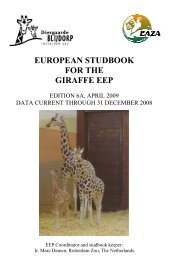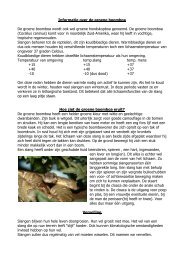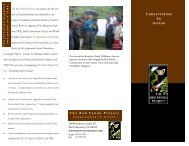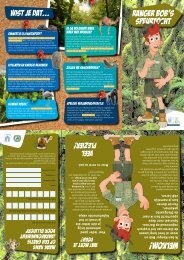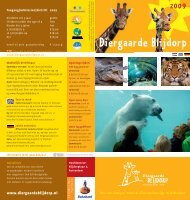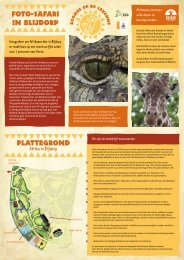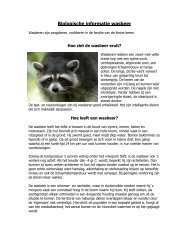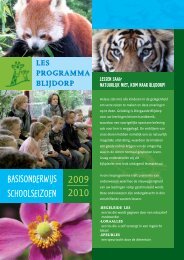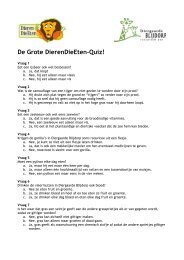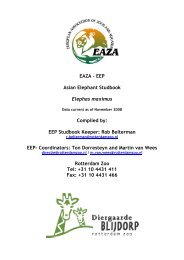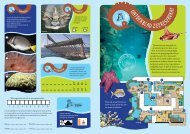Create successful ePaper yourself
Turn your PDF publications into a flip-book with our unique Google optimized e-Paper software.
<strong>EEP</strong> STUDBOOK CROWNED PIGEONS<br />
In the experimental part in three enclosures (Amsterdam Zoo in two aviaries, and in Alphen<br />
a/d Rijn birdpark) the perches were changed at random. Sometimes the birds could use only<br />
thick perches, sometimes only thin perches. After changing the perches, the birds were not<br />
observed for four days to get them used to the new elements in their enclosure. Three times<br />
thick perches were placed and three times thin perches. Each time observations were carried<br />
out during two days.<br />
In Rotterdam Zoo a complete different experiment was carried out. The birds in this small<br />
(and in the meantime pulled down) enclosure could only use sand and they were not very<br />
active. By some small trunks the surface was separated into four parts which were covered at<br />
random with sand or mould. Every time observations were carried out during two days and<br />
after this the substrate in some parts was changed again. Also in this experiment the birds was<br />
given a relaxation time of at least four days.<br />
During the experimental part of the research project the data were also registered using<br />
instantaneous scan sampling. Because of the different circumstances in the four enclosures it<br />
became necessary to develop four different configuration-files. As in the observational part,<br />
data were registered using “The Observer”.<br />
Data processing<br />
The data, acquired with the organiser and worked up with “The Observer” are converted to<br />
SAS edition 6.10.<br />
To make it easier to calculate these data, a lot of scientists have made a classification into<br />
different types of behaviour. The first person to do this was “Von Üxküll” in 1926 who<br />
introduced the term “Funktionskreis”. He meant the interaction between the animal and its<br />
environment. The animal react, depending on its character, on different stimuli from the<br />
environment and this behaviour influences the environment on its turn (Von Üxküll in Koene,<br />
1995). Others used this theory and for example Tembrock made a classification into eight<br />
different types of behaviour: adaptation in time (to stand, to sleep), in space (locomotion),<br />
metabolic behaviour (to eat), to search for protection (against climate, enemies), sexual<br />
behaviour, care-behaviour, social behaviour and explanation behaviour (Tembrock, 1980).<br />
Koene found that the different types of behaviour, determined by Tembrock, overlap in<br />
environments made by men. For that reason Koene composed a classification into twelve<br />
categories, based on Tembrock (Koene, 1995). This classification includes the following<br />
types of behaviouir:<br />
1. Behaviour in space (space) e.g. to walk, to fly<br />
2. Behaviour in time (time) e.g. to stand, to sit<br />
3. Sexual behaviour (hide) e.g. to mate, to incubate<br />
4. Positive social behaviour (socpos) e.g. to preen another animal<br />
5. Negative social behaviour (socneg) e.g. to fight<br />
6. Hiding behaviour (hide) e.g. to hide<br />
7. Exploration- and playing behaviour (info) e.g. to play<br />
8. Care-behaviour (care) e.g. to preen<br />
9. Metabolic behaviour (meta) e.g. to eat, to defecate<br />
10. Stereotypic behaviour (stereo) e.g. “to wave”<br />
11. Deviant behaviour (deviant) e.g. to kick at a door<br />
12. Other behaviour (other) e.g. “not visible”<br />
100



